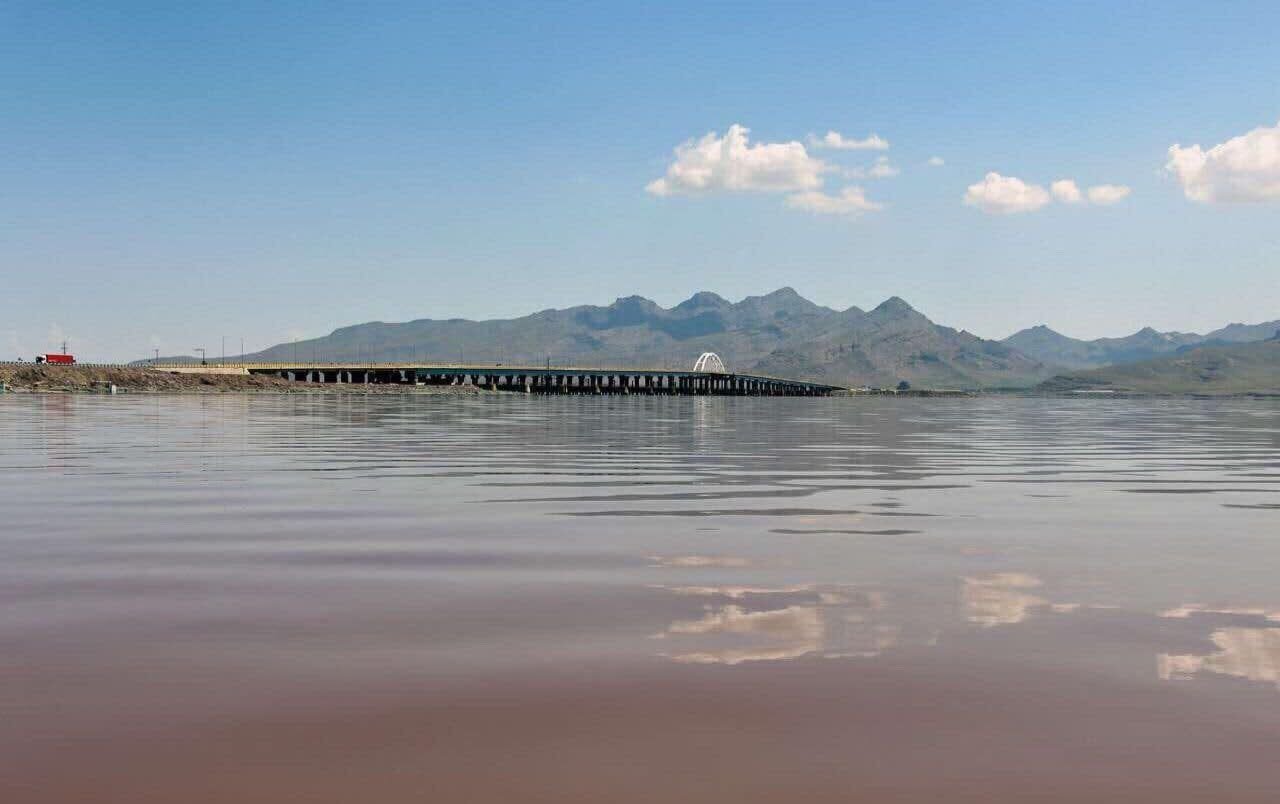Lake Urmias water volume level grow yryr
Lake Urmia’s water volume, level grow yr/yr
TEHRAN—Lake Urmia is currently in better condition in terms of level and volume of water compared to last year, an official with West Azarbaijan governor general's office has said.

Lake Urmia in the northwestern West Azarbaijan province started to dry up in the 2000s. The lake is the largest in West Asia and the sixth-largest salt lake in the world with a water surface area of 5,000 to 6,000 square kilometers.
“The current level of Lake Urmia is 1270.2 meters and the volume of water amounts to 1.140 billion cubic meters”, IRNA quoted Yaser Rahbardin as saying.
The area of Lake Urmia is now around 850 square kilometers which is in a better condition compared to last year, he added.
Considering the favorable rainfalls in autumn so far, and the persistence of the precipitations in the current water year which started on September 22, water will be released from reservoir dams to further help the restoration of the lake.
According to West Azarbaijan Province’s Regional Water Company, in the previous water year, some 467 million cubic meters of water was projected to be released into the lake. However, more than 1.180 billion cubic meters of water was actually released in Lake Urmia, Rahbardin noted.
Establishing specialized groups to monitor underground and surface water, dredging and organizing rivers, filling and decommissioning unauthorized wells, building online stations to monitor surface and underground water, installing water smart meters, adjusting 40 percent of allocated water resources from five-year development plans, and releasing more amount of water from reservoir dams are among taken measures and projects to help the revival of the lake, he highlighted.
Lake Urmia’s area expands year on year
Satellite images showed that the area of Lake Urmia measured on February 22 was equal to 2,061 square kilometers which has increased compared to 1,819 square kilometers on March 7, 2023.
Following the recent precipitations across the country and the importance of reviving wetlands and lakes, the country’s mapping organization monitored Lake Urmia’s area using satellite images from the Iranian calendar year 1401 (March 2022- March 2023) to 1402 (March 2023-March 2024), ISNA reported.
Japan-funded FAO project
The Food and Agriculture Organization of the United Nations (FAO), with the support of the government of Japan, identified technical agricultural solutions to increase water efficiency in the agriculture sector at the Lake Urmia basin, which may be efficient in saving the internationally known biosphere reserves.
Since 1995, Lake Urmia has been shrinking due to rapid upstream agricultural expansion and climate change. These forces have pushed the precious lake to the verge of depletion and have put the region’s health, economy, environment, industry, and agriculture at risk.
Despite the efforts of the Lake Urmia Restoration Program National Committee and its focus on the Lake’s restoration since 2013, the continuation of the critical situation demonstrates that sustainability, macro and micro, management solutions should be considered as the main essence of action plans.
In a concerted effort to address the challenges facing the Lake Urmia Basin in 2016, FAO launched the “Integrated Program for Sustainable Water Resources Management in the Lake Urmia Basin,” which was funded by the Government of Japan.
Key technical outcomes of this initiative included the implementation of a water accounting plus project in the Lake Urmia Basin and the identification of water-consuming hotspots within the basin. Notably, water accounting revealed the significant contribution of irrigated and rainfed agriculture to the Lake’s total evapotranspiration, emphasizing the importance of water-saving measures for the Lake’s restoration.
MT/MG
source: tehrantimes.com